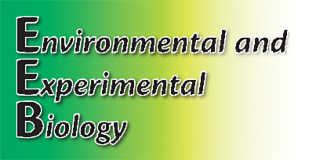
On-line: ISSN 2255–9582

| Faculty of Biology, University of Latvia | ||||||

|
Hard copy: ISSN 1691–8088
On-line: ISSN 2255–9582 Environ Exp Biol (2025) 23: 63–68
|
|||||

|
About the Journal | Retractions | Open Access | Author Guidlines | Current Issue | Archive |
|
Environmental and Experimental Biology |
Environ Exp Biol (2025) 23: 63–68 |
Inorganic fertilisers (IF) are widely used often leading to pollution of breeding sites of mosquitoes. In the same locations many species of unicellular algae, on which mosquito larvae feed, can be found as well. In this experiment, three conditions were studied: water, IF alone and an IF solution in which green algae belonging to the Scenedesmaceae family were cultivated (IF + A). When Aedes albopictus female mosquitoes could not choose where to lay their eggs because they had no possibility of contact with the different treatments beforehand – in the bioassays performed in blind double-tunnels – the numbers of positive or negative breeding sites and mean egg number in each were not statistically different. In contrast, when the females could freely choose where to lay their eggs – in the bioassays performed in plastic containers – the largest number of eggs were found in the IF + A treatment, followed by IF alone and, finally, water alone. The specific attractiveness of IF was clearly correlated with the greater carbon dioxide emissions of this treatment compared with the other two. This observation thus revealed that the carbon dioxide released by the algae accounts for the selection of breeding sites. Besides being more attractive to A. albopictus females, the IF + A combination ensured greater survival rates to the larvae and pupae.